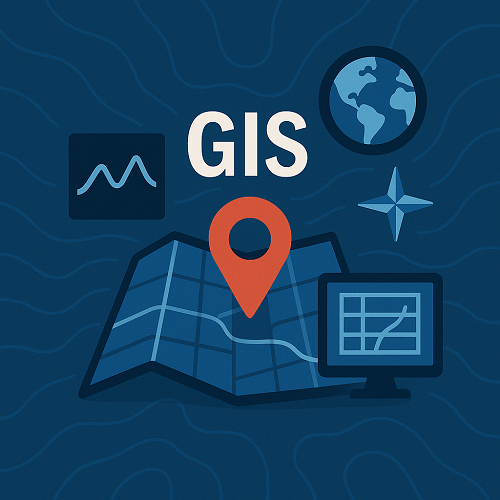TL;DR
- AI-driven geospatial analytics are transforming decision-making in 2025.
- Cloud-based GIS is enabling scalable and collaborative spatial data management.
- IoT integration with GIS provides real-time environmental and asset monitoring.
- Advanced spatial analytics offer deeper insights for urban planning and logistics.
- Esri continues to lead innovation in GIS platforms and tools.
What’s new right now
In 2025, the geospatial industry is witnessing a convergence of artificial intelligence, cloud computing, and IoT technologies within GIS platforms. AI is being increasingly applied to automate feature extraction, predict patterns, and perform anomaly detection in spatial datasets. Major providers like Esri are rolling out advanced cloud-native GIS tools that support global collaboration and rapid deployment. Additionally, IoT sensors are feeding location-based data directly into GIS dashboards, offering unprecedented levels of operational awareness (Forbes Tech Council).
Why it matters
For businesses, AI-enhanced GIS means faster, more accurate site selection, demand forecasting, and asset management. For technical teams, cloud-based GIS reduces infrastructure costs and simplifies data sharing across distributed teams. IoT integration adds a real-time dimension to geospatial data, improving responsiveness in sectors from transportation to energy. Together, these trends increase the return on investment in GIS technology and prepare organizations for data-driven decision-making.
Deep Dive: Emerging GIS Technologies in 2025
AI-Driven Spatial Analysis
AI algorithms are now routinely embedded in GIS workflows, from natural language queries for spatial datasets to automated classification of satellite imagery. Machine learning models can identify changes in land use or predict traffic congestion with high precision.
Cloud-Native GIS Platforms
Cloud GIS enables global teams to access and update geospatial data without complex server setups. Tools like Esri’s ArcGIS Online integrate with enterprise systems, offering APIs for custom applications and automated analysis pipelines.
IoT Integration
Real-time sensor data is no longer a separate domain—in 2025, IoT devices directly feed into GIS for monitoring water quality, equipment status, or wildlife migration patterns, providing actionable insights within seconds.
| Technology | Strengths | Limitations |
|---|---|---|
| AI-Driven GIS | Predictive insights, automation | Requires high-quality training data |
| Cloud-Based GIS | Scalable, collaborative | Dependent on internet connectivity |
| IoT-Integrated GIS | Real-time monitoring | Potential data security risks |
| Traditional On-Prem GIS | Full local control | High maintenance overhead |
Mini Case Study: Smart Logistics Optimization
Problem: A regional logistics company faced inefficiencies in delivery routing, leading to increased fuel costs and missed deadlines.
Approach: The company deployed IoT-enabled vehicle trackers integrated into a cloud-based GIS platform. AI algorithms analyzed traffic patterns and historical delivery data to suggest optimal routes in real time.
Outcome: Delivery times improved by 18%, fuel consumption dropped by 12%, and customer satisfaction ratings rose significantly within six months.
Implementation Checklist
- Assess existing geospatial data and identify integration points for AI and IoT.
- Select a cloud-based GIS platform with support for APIs and real-time data ingestion.
- Ensure data quality and security protocols are in place.
- Train teams on AI-enhanced spatial analysis tools.
- Establish KPIs for performance monitoring and iterative improvement.
- Review and update workflows quarterly based on insights.
FAQs
What is AI-driven GIS?
AI-driven GIS uses machine learning to process and interpret spatial data, automating analyses like classification, prediction, and anomaly detection.
Why is cloud-based GIS gaining popularity?
It offers scalability, easy collaboration, and reduced infrastructure costs, making it ideal for distributed teams.
How does IoT integrate with GIS?
IoT devices send real-time geolocated data directly into GIS systems for monitoring and analysis.
Can traditional GIS still compete?
Yes, in contexts where local control and offline access are priorities, but flexibility is limited compared to cloud solutions.
Is data security a concern in modern GIS?
Yes, especially with IoT integration; encryption and secure APIs are essential safeguards.
What industries benefit most from these trends?
Logistics, urban planning, environmental management, agriculture, and emergency services see significant gains.
Conclusion
As 2025 unfolds, the integration of AI, cloud, and IoT into GIS platforms is redefining the capabilities and reach of geospatial technology. Organizations that embrace these trends will unlock faster insights, better resource management, and greater resilience. To learn more about tailored solutions for your industry, explore our GIS services today.
